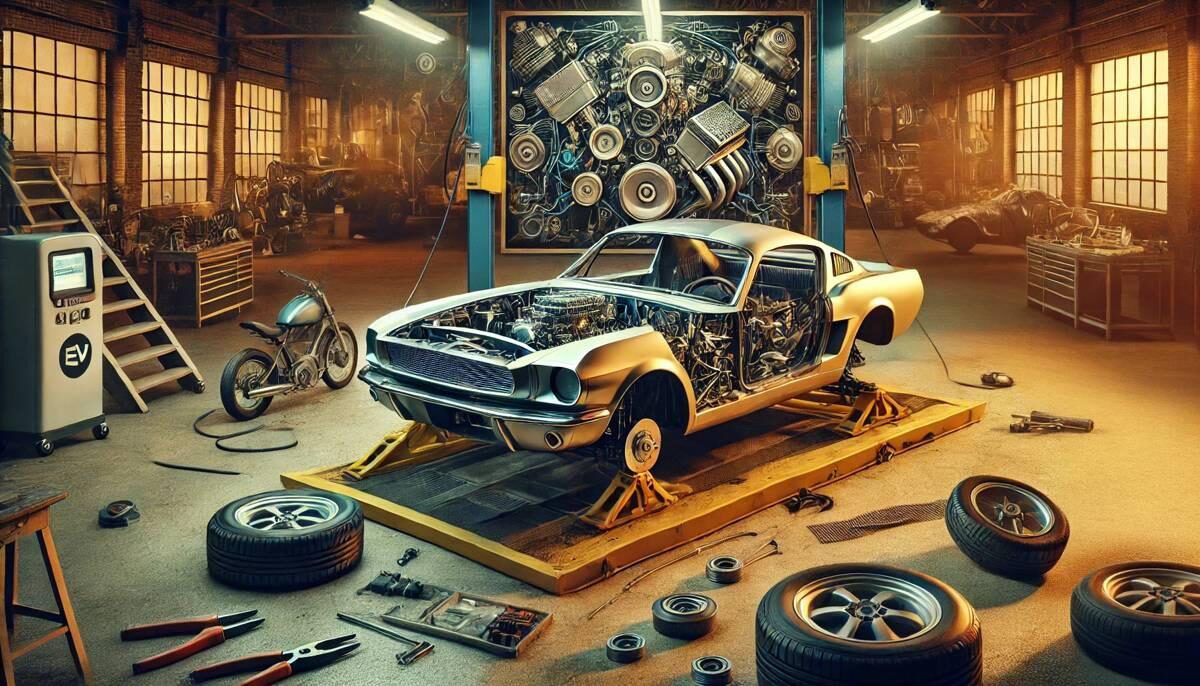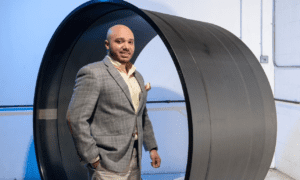In an unexpected marriage of old and new, technology is breathing fresh life into classic automobiles. What was once the domain of mechanical purists now welcomes digital innovation, creating custom cars that honor their heritage while embracing modern performance and comfort.
The Rise of Tech-Enhanced Classics
Classic car restoration has moved far beyond simple repairs and paint jobs. Today’s custom builders blend cutting-edge car customization with computer modeling, 3D scanning, and artificial intelligence to transform vintage vehicles into modern marvels.
“We’re not just restoring cars anymore,” says Tom Peterson, a custom car builder with 20 years of experience. “We’re reimagining them with technology that wasn’t even dreamed of when these vehicles were first built.”
This reimagining starts with precision. Advanced 3D scanning creates exact digital twins of classic bodies, allowing designers to test modifications virtually before cutting metal. These scans capture every curve and imperfection, preserving the character that makes each classic unique.
AI’s Role in Custom Creation
Artificial intelligence now plays a surprising role in classic car customization. Machine learning algorithms analyze thousands of designs to suggest modifications that remain true to a car’s original aesthetic while improving performance and safety.
AI helps solve one of the biggest challenges in custom builds: balancing authentic looks with modern driving experiences. Smart design programs can recommend subtle body modifications that accommodate newer, larger engines while maintaining classic proportions.
For those seeking vintage Broncos and other classic SUVs, AI helps designers create a vintage car with modern technology—vehicles that look period-correct but handle like modern machines. It calculates suspension geometries and chassis modifications that wouldn’t be possible through trial and error alone.
Check out Vintage Modern for a look at how you can own a custom vintage car with modern features, blending the past with the best of today’s engineering.
The Chalk Gray Example: Classic Looks, Modern Heart
Consider the transformation of a classic into the “Chalk Gray” masterpiece—a perfect example of this technological revolution. While externally faithful to its heritage, this vehicle conceals remarkable engineering within.
Starting with a modern chassis rather than restoring the original frame, the Chalk Gray creation features:
- A 300HP modern turbocharged engine with Roush Performance Package
- Soft black top covering a black rock interior
- Automatic transmission for everyday drivability
- Chrome wheels fitted with 33″ BFG KO3 All-Terrain Tires
Unlike traditional restorations, this approach creates what builders call “the world’s first fully modernized classic”—a vehicle inspired by the past but built with today’s technology.
Beyond the Engine Bay
The tech transformation extends well beyond performance. Modern safety features once impossible to integrate now come standard:
- Six airbags strategically placed without disrupting classic interiors
- Engineered crumple zones and side impact beams
- Stability control, anti-lock brakes, and traction control
- Backup cameras and parking sensors disguised to maintain vintage authenticity
Inside, the marriage of old and new continues with leather seating and Alcantara trim alongside touchscreen interfaces supporting Apple CarPlay and Android Auto. Power windows, heated seats, and dual-zone climate control offer comforts the original designers never imagined possible.
Building Better with Technology
The manufacturing process itself has been transformed by technology. Computer-controlled milling machines create parts with tolerances impossible to achieve by hand. 3D printing produces prototypes and even final components for vehicles whose original parts ceased production decades ago.
We’re using simulation software that tests how modifications affect aerodynamics, cooling, and structural integrity,” explains Sarah Chen, an automotive engineer specializing in classic conversions. “Thanks to advancements in automotive engineering, changes that would have required building and testing multiple physical prototypes can now be perfected digitally.
This tech-assisted approach reduces build time while increasing quality—vehicles that once took years to customize can now be completed in months.
The Warranty Revolution
Perhaps most telling of this technological shift is what happens after delivery. Traditional classic cars were notorious for reliability issues and repair challenges. Today’s tech-enhanced classics like the Chalk Gray come with comprehensive warranties once unthinkable in the custom car world.
A three-year/36,000-mile bumper-to-bumper warranty reflects confidence in the engineering behind these vehicles. Some builders even offer remote diagnostics systems that alert owners and service teams to potential issues before they cause problems.
Looking Ahead
As artificial intelligence and manufacturing technology continue advancing, the possibilities for classic car customization expand. Machine learning will enable increasingly sophisticated design assistance, while robotics will make precision fabrication more accessible—ultimately leading to faster manufacturing without compromising on quality or detail.
For enthusiasts, this technological revolution offers the best of both worlds: vehicles with timeless style and modern reliability. The next generation of custom classics will continue pushing boundaries—perhaps with electric drivetrains disguised as period-correct engines or augmented reality displays that maintain vintage appearances while providing modern information.
The future of classic cars isn’t just about preserving the past—it’s about reimagining it with all the tools of tomorrow.



































